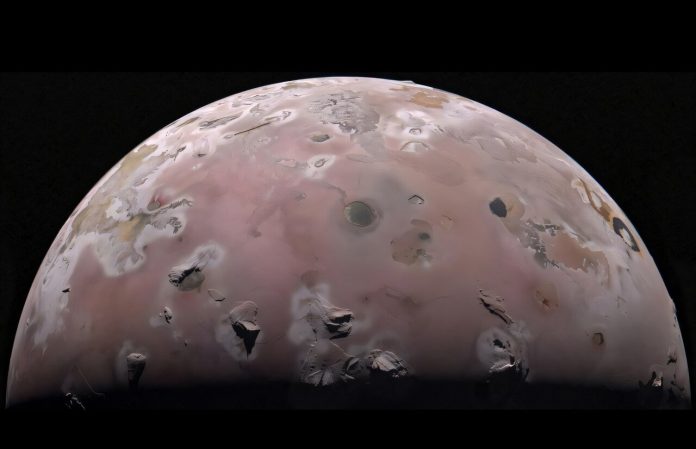
NASA scientists recently pulled off a remarkable space repair—saving a camera orbiting Jupiter from 370 million miles away.
The camera, called JunoCam, is part of NASA’s Juno spacecraft, which has been studying Jupiter since 2016.
In December 2023, the Juno team managed to restore the camera just in time to capture stunning images of Jupiter’s volcanic moon Io.
JunoCam takes visible light, color photos and is mounted outside the spacecraft’s protective radiation vault.
That’s a risky spot, because Jupiter has the most intense radiation belts in the solar system.
While the camera worked well during Juno’s first 34 orbits, trouble began to appear by orbit 47, and by orbit 56, the images were nearly all corrupted due to radiation damage.
Engineers suspected the radiation had damaged a tiny part inside JunoCam’s power system called a voltage regulator.
But fixing a spacecraft so far from Earth isn’t easy. They couldn’t just replace a part or open the camera. So, the team turned to an unusual solution: heating.
This process, called annealing, involves warming a material to a certain temperature and then letting it cool slowly. Scientists know it can sometimes repair microscopic defects in materials like silicon, which is used in electronics, although it’s not fully understood how it works.
The Juno team raised the camera’s temperature to 77 degrees Fahrenheit—much warmer than usual—and waited. To their relief, the images from the next few orbits came back clear. But the victory didn’t last long.
As Juno continued flying closer to Jupiter’s harsh radiation zones, the camera again began showing streaks and noise, especially by orbit 55.
With time running out before Juno’s close flyby of Io, the team tried one last fix. They heated JunoCam even more, hoping that a more extreme round of annealing would work. For a week, it didn’t look promising. Then, just days before Juno flew within 930 miles of Io on December 30, the images suddenly improved.
What came next were some of the best photos of Io ever taken. JunoCam captured dramatic views of Io’s north polar region, showing massive mountain blocks dusted with sulfur dioxide frost and new volcanic areas with large lava flows.
Since then, the team has used the same annealing trick on other instruments aboard Juno. They believe this technique could help future spacecraft—and even satellites orbiting Earth—survive in harsh radiation environments.
Juno has now orbited Jupiter 74 times. While image noise has started to return, the mission continues to push the limits of space exploration, proving that even from millions of miles away, repairs are possible.
Source: NASA.



